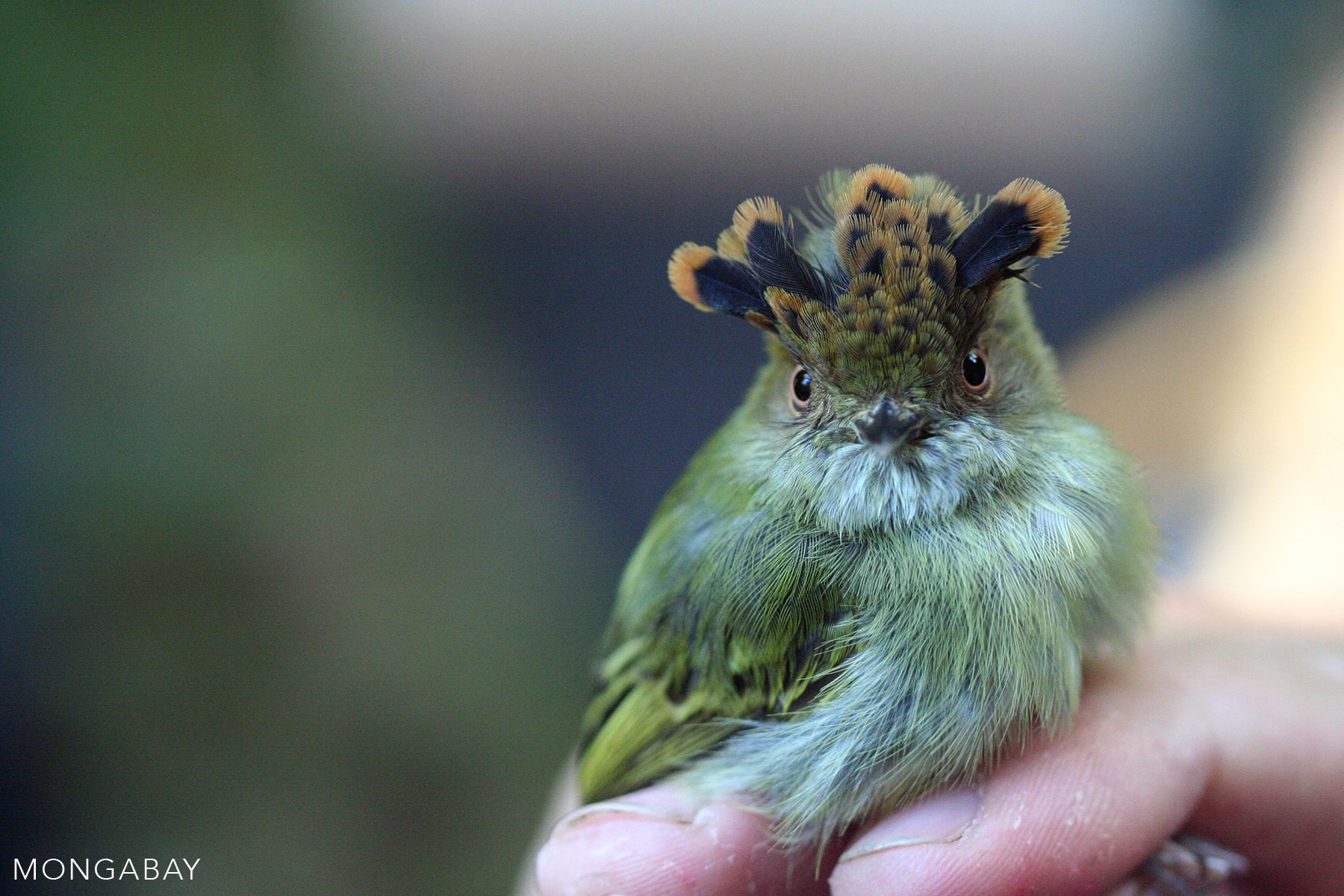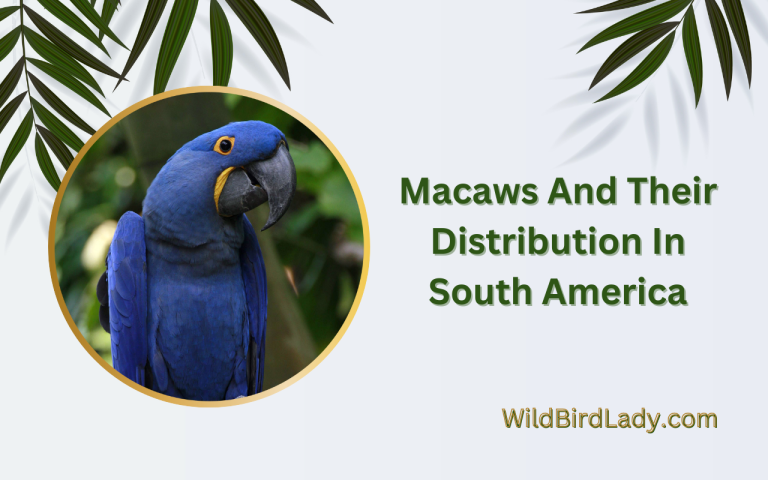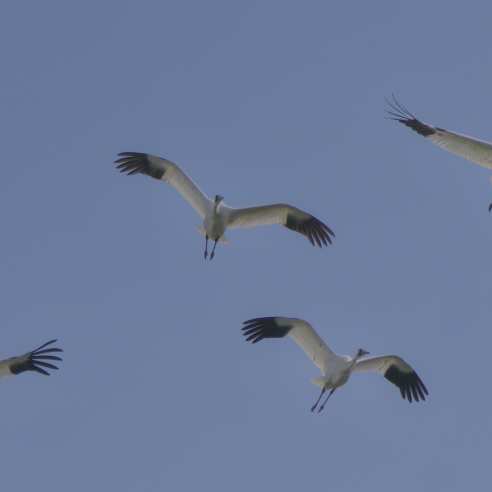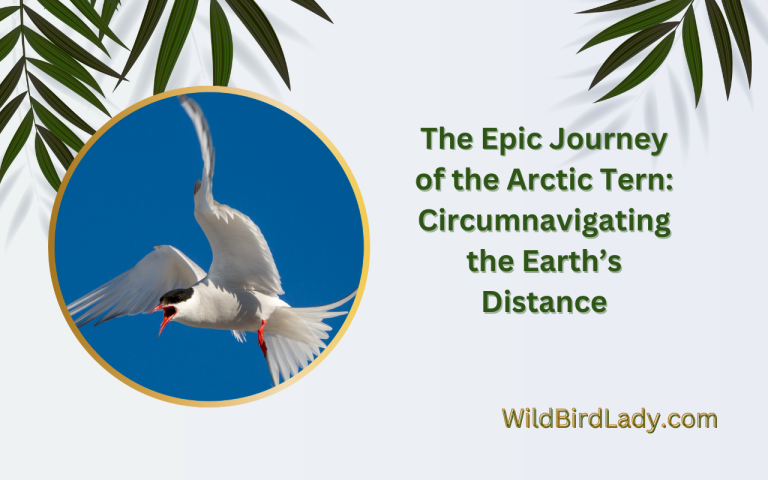Discover 10 Amazing Species: The Coolest Birds in the World
Discover the world’s coolest birds and their fascinating characteristics. Here are 10 magnificent species you should know about.
Birds are one of the most diverse groups of animals, with about 10,000 species worldwide. Each bird species has a unique set of features that make them special and stand out. From the tiny hummingbird to the majestic eagle, birds come in all shapes and sizes, with extraordinary abilities and behaviors.
Some birds have striking colors and patterns, while others have special adaptations for hunting, flying, or singing. In this article, we’ll introduce you to 10 of the coolest birds on the planet. So, get ready to be impressed by their awesomeness!
Credit: www.nature.org
The Scarlet Macaw – A Colorful Bird That Will Leave You Spellbound
The scarlet macaw – a colorful bird that will leave you spellbound
Get ready to be awed as we introduce you to one of the most striking birds on the planet – the scarlet macaw. With its vibrant colors and lively personality, it’s no wonder this bird has captured the hearts of bird lovers worldwide.
We will delve into the fascinating world of the scarlet macaw, we’ll explore its physical characteristics, geographic distribution, classifications and taxonomy, its behaviors, feeding, and breeding habits, and some fun facts to leave you mesmerized.
Physical Characteristics Of The Scarlet Macaw:
The scarlet macaw is a large, brilliantly-colored parrot that can grow up to 33 inches in length. It has a vibrant red plumage and a splash of yellow, blue, and green on its wings. The bird’s face is distinctively white with black feathers around the eyes, and its curved beak is perfect for cracking nuts and seeds.
Interestingly, the scarlet macaw’s tail is longer than its entire body and can help it navigate through the dense forests.
- The scarlet macaw is one of the largest macaws in the world, growing up to 33 inches.
- It features a striking red plumage with yellow, blue, and green on its wings.
- The bird has a large, curved beak that’s perfect for cracking nuts and seeds.
- The scarlet macaw’s tail is longer than its body, aiding its movement through forests.
Geographic Distribution:
Scarlet macaws are exclusively found in central and south america. They have been sighted in mexico, belize, costa rica, guatemala, panama, ecuador, colombia, guyana, venezuela, peru, and brazil. These birds prefer to live in humid tropical forests along rivers, but they can also be found in savannas, swamps, and lowlands.
- Scarlet macaws are exclusively found in central and south america.
- They have been sighted in thirteen countries that include brazil, costa rica, panama, and venezuela.
- These birds prefer to live in humid tropical forests near rivers.
Classifications And Taxonomy:
The scarlet macaw belongs to the order psittaciformes and the family psittacidae. Its scientific name is ara macao, and it’s classified as a species of least concern by the international union for conservation of nature (iucn). However, due to habitat loss and illegal pet trade, the population of scarlet macaws is declining in some parts of its range.
- The scarlet macaw belongs to the order psittaciformes and the family psittacidae.
- Its scientific name is ara macao.
- It is classified as a species of least concern by the international union for conservation of nature (iucn).
Behaviors, Feeding, And Breeding Habits:
These boisterous birds are known for their loud calls, especially during early mornings and evenings. Scarlet macaws are omnivores, and they feed on a diet of fruits, nuts, seeds, and occasionally insects and small mammals. Breeding season usually starts between december and may, and the bird’s familiar courtship behavior involves the male regurgitating food for the female.
The female scarlet macaw lays two to three eggs in a nest, and both male and female take turns incubating the eggs for about 26 days.
- Scarlet macaws are known for their loud calls during early mornings and evenings.
- They feed on fruits, nuts, seeds, insects, and small mammals.
- Breeding season usually starts between december and may, involving courtship behavior such as male regurgitating food for the female.
- Female scarlet macaws lay two to three eggs in a nest that both male and female take turns incubating for about 26 days.
Fun Facts About The Scarlet Macaw
- The scarlet macaw is considered one of the most intelligent birds, with problem-solving skills similar to that of a four-year-old human.
- These birds have a lifespan of up to 50 years in captivity.
- The scarlet macaw was a sacred bird to the ancient mayans and was often depicted in their artwork.
- In captivity, these birds can learn up to 30 words and phrases.
- Scarlet macaws use their powerful beaks to break open hard-shelled fruits like nuts and seeds. However, their beaks are so strong that they can also crack open coconuts and even cages.
- The scarlet macaw is highly intelligent, having problem-solving skills similar to that of a four-year-old human.
- These birds can live up to 50 years in captivity.
- Ancient mayans considered these birds sacred and often depicted them in their artwork.
- In captivity, they can learn up to 30 phrases and words.
- Scarlet macaws use their powerful beaks to break open nuts and seeds. They can even crack open cages with them.
Wrap up:
The scarlet macaw is a fascinating, intelligent, and breathtaking bird that commands attention wherever it goes. From its vibrant plumage to its incredible problem-solving skills, there is no doubt that this bird is truly one of the coolest birds in the world.
We hope that you have enjoyed learning more about the scarlet macaw and that this article has increased your appreciation for this majestic bird species.
The African Grey Parrot – A Smart And Endearing Creature
The african grey parrot is a smart and affectionate bird that is highly trainable. There are two main subspecies of african grey parrot, the congo grey and the timneh grey, and they are classified under the genus psittacus.
Physical Characteristics Of The African Grey Parrot
- The african grey parrots are medium-sized birds, typically ranging from 30-40 cm (12-16 in) in length.
- They have a striking grey plumage, with a black beak and a distinctive red tail feather.
- Both male and female african grey parrots look alike, with no significant visible differences.
Geographic Distribution
- African grey parrots are native to the rainforests of west and central africa.
- They are primarily found in countries such as cameroon, gabon, ghana, ivory coast, and the democratic republic of congo.
Classifications And Taxonomy
- The african grey parrot is classified under the genus psittacus and is part of the family psittacidae.
- There are two known subspecies of african grey parrot, the congo grey (psittacus erithacus erithacus) and the timneh grey (psittacus erithacus timneh).
Behaviors, Feeding, And Breeding Habits
- African grey parrots are highly intelligent and social birds that have a strong emotional bond with their owners.
- They require a balanced diet consisting of fruits, vegetables, nuts, seeds, and a small amount of protein.
- These birds are monogamous breeders and typically mate for life. African grey parrots lay between three to five eggs during the breeding season, which takes place between january to march.
Fun Facts About The African Grey Parrot
- African grey parrots have the intelligence of a young child and have been known to learn up to 2,000 words.
- They have the ability to mimic speech and sounds, and their realistic mimicry of human speech has earned them the nickname “feathered einstein”.
- African grey parrots have been studied for their cognitive abilities and have demonstrated advanced problem-solving and learning skills.
The Resplendent Quetzal – The Evolution Of A Sacred Bird
Nestled in the tropical forests of central america, the resplendent quetzal is widely considered one of the most beautiful birds on the planet. They are a symbol of freedom, beauty and heritage, and their historical significance makes them a sacred creature of immense importance.
Physical Characteristics Of The Resplendent Quetzal
- Measuring up to 14 inches in length, their long, brilliant green feathers cascade elegantly and effortlessly down their back.
- The male bird boasts bright red plumage on their breast, as well as a white and crimson collar, while the female looks striking with her bright green and copper-colored feathers.
- Their long, distinctive tail feathers can grow up to 2ft in length, making them highly prized among collectors.
Geographic Distribution
- These magnificent birds can be found in the montane cloud forests of central america, covering a range from southern mexico to panama.
- They inhabit humid, mountainous areas that offer them ample protection from direct sunlight and thrive in altitudes ranging between 4,900 to 9,800ft.
Classifications And Taxonomy
- The scientific name of the resplendent quetzal is pharomachrus mocinno.
- They are a member of the trogonidae family, which is a group of forest birds found only in the neotropics.
Behaviors, Feeding, And Breeding Habits
- They are frugivorous, meaning they only feed on fruit – primarily, aguacatillo and wild avocado – and occasionally insects, getting most of their sustenance from the fruit they consume.
- Breeding season for the resplendent quetzal takes place from march to june. During this time, the male bird displays elaborate courtship behaviors to entice the female, including tail feather displays.
- They are highly territorial and defend their nesting site from other birds, but also play a crucial role in forest seed dispersal.
Fun Facts About The Resplendent Quetzal
- The quetzal was considered a sacred bird to the ancient mayans and aztecs, who believed it was a messenger from the gods.
- The name “quetzal” comes from the aztec word “quetzalli” meaning “large brilliant tail feathers” as they were highly prized among royalty.
- In guatemala, the currency is called “quetzal” and features the bird on its bill.
The resplendent quetzal is more than just a remarkable bird; it is an emblem of heritage, culture and freedom. These exquisitely beautiful birds serve as a reminder of our connection to the natural world and our role in protecting it for future generations.
The Flightless Kiwi – A Bird That Defies Convention
When we think of birds, we often imagine them soaring gracefully through the sky with their wings spread wide. But what about a bird that can’t fly? Meet the flightless kiwi, a unique and fascinating bird species that defies convention in more ways than one.
Let’s take a closer look at this amazing creature, its physical characteristics, geographic distribution, classifications, behaviors, feeding habits, breeding practices, and a few fun facts.
Physical Characteristics Of The Flightless Kiwi
- The flightless kiwi is a small, chicken-sized bird, measuring about 16 to 18 inches in height.
- It has a round body covered in hair-like feathers colored in shades of brown, gray, or black.
- Unlike most birds, the kiwi lacks a tail, and it has small, weak wings that are almost useless for flight.
- Its most distinctive feature is its long bill, which is used to probe the ground for food.
Geographic Distribution
- Flightless kiwis are native to new zealand, where they are found in a range of habitats, from forest floors to grasslands.
- There are five recognized species of kiwi, all of which are flightless and endemic to new zealand.
Classifications And Taxonomy
- The five species of kiwi are classified in the apterygidae family, which is a group of birds that are flightless, have hair-like feathers, and are found only in new zealand.
- The scientific name for the flightless kiwi is apteryx mantelli, named after walter mantell, a 19th-century naturalist from new zealand.
Behaviors, Feeding, And Breeding Habits
- The kiwi is a primarily nocturnal bird, spending most of its day sleeping in burrows dug in the ground.
- Its long bill is perfect for probing the ground for insects, worms, and other small invertebrates that make up its diet.
- Kiwis are monogamous birds, and they mate for life. They lay their eggs in burrows, and both parents share the responsibility of incubating them.
- The eggs are among the largest of any bird relative to their size, and they take about 80 days to hatch.
Fun Facts About The Flightless Kiwi
- The kiwi is a symbol of new zealand and is featured on the country’s coat of arms.
- Kiwis have a keen sense of smell and use it to locate food and detect predators.
- Despite its small size, the kiwi lays eggs that are about six times larger than those of a chicken.
- The kiwi is the only bird with nostrils at the end of its long bill.
How Did The Flightless Kiwi Evolve Without Wings?
- The kiwi’s evolutionary history is still not fully understood, but researchers believe that its ancestors were flighted birds that arrived in new zealand from australia about 60 million years ago.
- Over time, these birds evolved into ground-dwelling, flightless creatures that were well adapted to the unique environment of new zealand.
- The kiwi gave up its ability to fly in exchange for other specialized adaptations, such as its long bill for probing the ground for food and its keen sense of smell for locating prey.
The flightless kiwi is a unique and fascinating bird that defies convention in more ways than one. From its small size and hair-like feathers to its long bill and inability to fly, the kiwi is a true marvel of avian evolution.
Whether you’re a bird enthusiast or simply curious about the natural world, the flightless kiwi is definitely a species worth knowing about.
The Flamboyant Flamingo – A Sight To Behold
If you’re looking for a bird that’s both strikingly beautiful and undeniably unique, you can’t go wrong with the flamboyant flamingo. This gorgeous bird boasts an impressive list of qualities that make it stand out from the rest of the avian crowd.
In this section, we’ll dive into the physical characteristics of the flamboyant flamingo, its geographic distribution, classifications and taxonomy, behaviors, feeding, and breeding habits, and some fun facts about this stunning bird.
Physical Characteristics Of The Flamboyant Flamingo
The flamboyant flamingo is known for its unique and beautiful physical characteristics, including:
- Long, thin legs that allow it to stride effortlessly through shallow waters
- A long, curved neck that can be extended to reach food and water
- A flamboyant, feathery plume of pink, orange, or red feathers that covers its entire body
- A curved beak that is perfect for scooping up food from the shallow waters where it lives
- Webbed feet that help it balance on one leg while standing in the water
Geographic Distribution
The flamboyant flamingo is found in many different parts of the world, including:
- South america, where the andean flamingo is found
- Africa, where the greater and lesser flamingos are found
- Europe, where the mediterranean flamingo is found
Classifications And Taxonomy
The flamboyant flamingo is part of the family phoenicopteridae and the order phoenicopteriformes. It is further classified into six different species, each with its own unique characteristics based on geography and physical traits.
Behaviors, Feeding, And Breeding Habits
The flamboyant flamingo is a social bird that lives in large groups called flocks. Its diet primarily consists of small crustaceans, algae, and various types of invertebrates found in shallow water habitats.
Breeding can occur all year round, but most breeding happens during the rainy season when food is most abundant. Females lay a single egg in a shallow nest, which both parents take turns incubating.
Fun Facts About The Flamboyant Flamingo
- The color of a flamingo’s feathers is determined by the food they eat. Their diet of mostly shrimp and algae is what makes them pink!
- Flamingos are able to stand on one leg for a very long time, even while they sleep. This is a way to regulate their body temperature while standing in cold water.
- The word “flamingo” comes from the spanish word “flamenco,” which means flamingos and is also the name of a traditional spanish dance.
The flamboyant flamingo is truly a sight to behold, with its unique physical features, social behaviors, and interesting diet. Whether you’re an avid bird lover or simply someone who appreciates beauty in the natural world, the flamingo is sure to capture your attention and imagination.
The Shoebill – A Prehistoric Bird That Survived Against All Odds
The shoebill – a prehistoric bird that survived against all odds
The shoebill, also known as balaeniceps rex, is a strange and fascinating bird species that has managed to endure for millions of years. With its prehistoric appearance and unique behavior, the shoebill is a bird species that bird enthusiasts should know about.
Here are the key points you need to know about the shoebill:
Physical Characteristics Of The Shoebill
- The shoebill is a tall, greyish-blue bird, standing up to 5 feet tall with a wingspan of 8 feet.
- Its most notable feature is its distinct shoe-shaped bill, which can reach up to 9 inches in length and is used to catch prey.
- Its neck is also elongated, allowing it to see prey in shallow waters from a great distance.
Geographic Distribution
- The shoebill can be found in swampy areas of central tropical africa, including uganda, south sudan, zambia, and tanzania.
- They prefer to live in shallow freshwater swamps with tall papyrus reeds to hide in and feed from.
Classifications And Taxonomy
- The shoebill is the only surviving member of the balaenicipitidae family, which is derived from the bird’s latin name, balaeniceps rex.
- It was first discovered in the 19th century and was initially thought to be related to storks, but is now recognized as a completely separate family.
Behaviors, Feeding, And Breeding Habits
- The shoebill is a patient hunter, standing still for long periods of time before pouncing on fish or amphibians with its sharp bill.
- They are solitary birds, only coming together during the breeding season between november and april.
- The female lays one or two eggs, which both parents take turns incubating for over a month.
Fun Facts About The Shoebill
- The shoebill is sometimes referred to as the “whale-headed stork” due to its massive bill and long neck.
- They are known to be very still and statuesque, which can make them appear almost like trees at times.
- Due to their rarity and unique appearance, the shoebill has become a popular bird for birdwatchers to seek out on safari.
What Makes The Shoebill Unique Among Other Birds?
- The shoebill’s distinctive bill is a key factor that sets it apart from other bird species.
- Its prehistoric features and slow, careful hunting style make it easily recognizable and unlike any other bird in appearance and behavior.
- Additionally, the shoebill’s solitary nature and dependence on swampy freshwater environments make it a truly unique avian species.
The Blue Jay – A Symbol Of Beauty And Intelligence
With its vibrant blue and white feathers, the blue jay is one of the most stunning birds worldwide. It is also renowned for its intelligence and vocalization abilities. In this section, we will delve into the physical characteristics, geographic distribution, classifications and taxonomy, behaviors, feeding and breeding habits, as well as the fun facts about the blue jay.
Physical Characteristics Of The Blue Jay
- The blue jay is a medium-sized bird, with an average length of 9-12 inches and a wingspan of 13-17 inches.
- It has striking blue and white plumage, with a distinctive crest on its head.
- Females are slightly smaller than males and have duller plumage.
- Their eyes are dark, and they have a black necklace that separates their white throats from their blue chests.
Geographic Distribution
- Blue jays are native to north america and can be found in diverse habitats like forests, suburban parks, and gardens.
- They breed throughout the eastern and central united states, southern canada, and mexico.
- During winter, blue jays can migrate south to florida, texas, and mexico, to avoid freezing temperatures.
Classifications And Taxonomy
- The blue jay is a member of the corvidae family, which includes crows, ravens, and magpies.
- Its scientific name is cyanocitta cristata.
- Blue jays have diverse subspecies, which differ based on their geographical location, vocalizations, and physical characteristics.
Behaviors, Feeding, And Breeding Habits
- Blue jays are intelligent birds and have been observed using tools to extract food.
- Their diet consists of insects, nuts, seeds, fruits, and occasionally small animals.
- During breeding season, blue jays form monogamous pairs and build nests together.
- They lay 4-5 eggs, which hatch after 16-18 days, and the young birds usually leave the nest after 17-21 days.
Fun Facts About The Blue Jay
- The blue jay is an excellent mimic and can imitate the sound of other birds, animals, and even human voices.
- They are also notorious for their aggressive behavior, especially around their nest and food sources.
- Blue jays have been known to cache thousands of acorns in one season, providing them with a vital food source during winter.
- Their blue feathers are not actually blue, but instead, a result of the light reflection from their feather structure.
The blue jay is more than just a beautiful bird. It is also a symbol of intelligence, vocalization, and resourcefulness. Its blue and white hues are a mesmerizing addition to any natural setting, and its behavior and feeding habits make it a fascinating bird to observe.
The Golden Eagle – The King Of The Skies
The Golden Eagle – The King Of The Skies
Golden eagles are large birds of prey found in north america, europe, and asia. These magnificent birds have sharp claws and massive beaks to hunt their prey. They are admired for their strength, agility, and keen eyesight. Here’s everything you need to know about the golden eagle:
Physical Characteristics Of The Golden Eagle
- Golden eagles are about 2.5 to 3 feet tall and can weigh up to 15 pounds.
- Their wingspan ranges from 6 to 7 feet, making them one of the largest birds of prey in north america.
- These eagles have dark brown feathers on their body and golden feathers on their head and neck.
- Their powerful talons can exert a force of up to 750 pounds per square inch.
Geographic Distribution
- Golden eagles can be found in north america, europe, and asia.
- They usually inhabit mountainous regions in the western half of north america, from alaska to mexico.
- In europe and asia, they live in the mountain ranges of the alps, the himalayas, and the altai mountains.
Classifications And Taxonomy
- The scientific name of the golden eagle is aquila chrysaetos.
- They belong to the family accipitridae, which includes hawks, eagles, kites, and harriers.
- Golden eagles are further classified into several subspecies based on their geographical location, feather color, and other physical characteristics.
Behaviors, Feeding, And Breeding Habits
- Golden eagles are known for their hunting skills. They prey on small mammals such as rabbits, hares, and squirrels, as well as birds and reptiles.
- They are also scavengers, and often search for carcasses of animals to feed on.
- These eagles mate for life and build their nests in high cliffs or trees. The female lays two to three eggs, which hatch after about 40 days of incubation.
- Both parents take turns incubating the eggs and caring for the chicks.
Fun Facts About The Golden Eagle
- In ancient times, the golden eagle was considered a symbol of power and bravery by many cultures, including the romans and the persians.
- The golden eagle can fly up to 200 miles per hour.
- These eagles have an incredible eyesight that enables them to spot prey from miles away.
How Do Golden Eagles Catch Their Prey?
- Golden eagles use their keen eyesight to spot prey from high above.
- Once they locate their prey, they dive down at speeds of up to 150 miles per hour to catch it.
- They use their sharp talons to grab and kill their prey instantly.
The golden eagle is undoubtedly one of the coolest birds in the world. With impressive physical characteristics, geographic range, hunting skills, and breeding habits, they are a remarkable species. Get to know these majestic birds by going out for a hike in the mountains and observing them in their natural habitat.
The Fairy Penguin – The World’S Smallest Penguin
Physical Characteristics Of The Fairy Penguin
The fairy penguin, also known as little penguin, is the smallest of all penguin species, measuring only 33 cm (13 in) in height and weighing around 1 kg (2. 2 lb). Its plumage is blue-grey on the back and white on the chest and belly.
They have a distinct white stripe running horizontally over each eye, which makes them look like they are wearing a pair of spectacles.
- Their feathers are dense and waterproof, allowing them to swim effortlessly in cold ocean waters.
- They have webbed feet that are perfect for paddling through water.
Geographic Distribution
Fairy penguins are native to the southern coastlines of australia and new zealand, from perth in western australia to as far east as otago in new zealand. They are also found on a few smaller islands off the coast.
- Specifically, they are known to inhabit coastal areas of south australia, tasmania, victoria, southern new south wales, stewart island, and the chatham islands among others.
- They prefer rocky shores, sand dunes, and coastal vegetation as their habitat.
Classifications And Taxonomy
The fairy penguin belongs to the spheniscidae family, which includes all penguins in the world. Its scientific name is eudyptula minor.
- Fairy penguins are also called little penguins due to their small size.
- They are sometimes referred to as “blue penguins” due to the bluish hue of their feathers.
Behaviors, Feeding, And Breeding Habits
Fairy penguins are social creatures that live and travel in groups called “rafts” or “waddles”. They are mostly active at night and during dawn and dusk and rest during the day.
- They feed mainly on small fish, squid and krill, diving and swimming underwater for up to 20 seconds at a time to catch their prey.
- During breeding season, fairy penguins form monogamous pairs and build their nests in burrows made of sand, vegetation, or natural crevices.
- Female and male fairy penguins take turns incubating their eggs, with incubation periods lasting around 33 days.
- After hatching, both parents take turns feeding and protecting their chicks until they fledge, which can take anywhere between 7 and 10 weeks.
Fun Facts About The Fairy Penguin
- Fairy penguins are known to be the only penguins that breed in australia.
- They are the only penguins with blue and white feathers, making them easily distinguishable from other penguin species.
- Despite their small size, they can swim long distances, covering up to 50 kilometers (30 miles) in a day.
- Fairy penguins are also known for their vocalizations, which include a range of sounds that sound like braying, trumpeting, or quacking.
Is The Fairy Penguin Really A Penguin?
Yes, the fairy penguin is a penguin, despite its small size. It belongs to the spheniscidae family, which includes all penguin species in the world. Interestingly, some people refer to them as “penguins in miniature”.
The Horned Guan – The Mystery Of The Mountains
The horned guan (oreophasis derbianus) is an elusive bird species that lives in the cloud forests of central america. With its unique physical characteristics and endangered status, it is a bird that many nature enthusiasts would love to see in the wild.
In this section, we will be discussing the key points about the horned guan, including its physical characteristics, geographic distribution, classifications and taxonomy, behaviors, feeding, and breeding habits, fun facts, and why it is so rare.
Physical Characteristics Of The Horned Guan
The horned guan is a large and colorful bird that can measure up to 85 cm in length and weighs up to 2. 5 kg. Its most recognizable feature is the pair of horn-like feathers that protrude from its forehead, which gives it a unique appearance.
Some of the other physical characteristics of the horned guan are:
- The male and female have similar plumage and coloration, with black bodies, brown wings, and a white band on their tails.
- They have a distinctive red wattle around their eyes, which makes them stand out.
- Their feet are strong and have sharp talons that they use to perch on tree branches.
Geographic Distribution
The horned guan is found in the cloud forests of the sierra madre de chiapas mountain range in southern mexico and guatemala. They prefer to live in high altitudes, between 1,500 and 3,300 meters above sea level, where they have access to a variety of food sources.
Classifications And Taxonomy
The horned guan belongs to the family cracidae, which includes other guans, chachalacas, and curassows. It is classified as a near-threatened species due to habitat loss and hunting. The horned guan is the only member of the genus oreophasis.
Behaviors, Feeding, And Breeding Habits
The horned guan is a shy and reclusive bird that is hard to spot in the wild. They spend most of their time in the canopy of trees, where they feed on a variety of fruits, berries, and insects. During breeding season, which is from march to may, they build a nest in a tree hollow and lay one or two eggs.
Fun Facts About The Horned Guan
- The horned guan is the national bird of guatemala.
- They are named after edward derby, who collected the first specimen in the 19th century.
- The horned guan was believed to be extinct until it was rediscovered in the 1940s.
- The horned guan’s unique horn-like feathers were once used in native american headdresses.
Why Is The Horned Guan So Rare?
The horned guan is an endangered species due to habitat loss and hunting. The cloud forests they inhabit are being destroyed due to logging, agriculture, and human settlements, which is reducing their habitat and food sources. Additionally, they are hunted for their meat and feathers, which are used for traditional ceremonies and rituals.
Conservation efforts are underway to protect the horned guan and its habitat, but more needs to be done to ensure their survival.
Frequently Asked Questions On “The Coolest Birds In The World – 10 Awesome Species You Should Know About”
What Makes A Bird “Cool”?
Birds have unique adaptations such as colorful plumage, impressive wingspans, and fascinating behaviors. “cool” birds can also have unique habitats, diet, and breeding behaviors that make them stand out.
What Are Some Of The Coolest Bird Species?
Some of the coolest bird species include the puffin, peacock, flamingo, toucan, snowy owl, and hummingbird. Each of these birds has unique traits that make them fascinating to observe.
Where Are The Coolest Birds Found In The World?
Many of the coolest bird species can be found in diverse habitats across the world including the arctic, rainforests, savannas, deserts, and wetlands. Their habitats and behaviors make them a crucial part of the ecosystem they live in.
Conclusion
These magnificent creatures have demonstrated their striking beauty and impressive adaptability to diverse ecological niches. In our article, we have presented ten of the coolest birds in the world, each with distinctive traits that make them a wonder to behold.
Whether you are seeking to learn more about the exceptional survivors among avian species, love bird watching, or just have a fascination with the feathered creatures, this article has presented some interesting insights. From the magnificent frigatebird to the perfect aerodynamic design of the harpy eagle, these birds are fascinating in their own right.
We know there are many other amazing avian species out there, and we encourage you to explore and discover more about them. We hope our article has been a delightful read for you and that you have learned something new about the coolest birds in the world that you can share with your friends and family.








